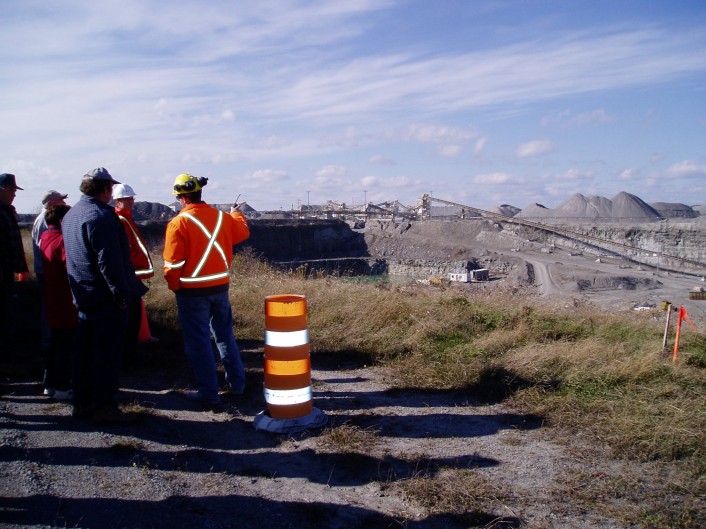Every one of us uses sand, gravel and stone as part of our modern lifestyle. From the concrete foundations in our homes to the roads we travel, mineral aggregates are so essential that most of us take them for granted. But in areas where these materials are extracted, the aggregate industry is often viewed primarily as a destroyer of natural areas and a disruption to rural living.
So the release this week of new voluntary standards for the aggregate industry by the Cornerstone Standards Council is welcome news for communities struggling to cope with pits and quarries. The region around Orillia already has dozens of these operations in the limestone bedrock areas of Carden, Ramara, and Severn, and in the gravel areas on the Oro Moraine. A recent provincial review has identified this region as a major source area for future aggregate supplies, so the potential conflicts associated with this industry are only going to grow.
The Cornerstone standards have been developed through a grueling three-year process involving major industry players, municipal planners, and environmental and community groups including the Couchiching Conservancy, Ontario Nature, and Environmental Defence. Nearly all of the people participating in the process are veterans of hard-fought and often bitter battles around the siting of new pits and quarries. In such a group, consensus on standards that are both meaningful and achievable does not come easy.
The aggregate industry is already regulated by various pieces of provincial legislation, and that won’t change. The inspiration for a voluntary approach to set higher standards was the success of FSC (Forest Stewardship Council) certification in Ontario’s forest industry, which has to a large extent ended “the war in the woods” of a decade ago. Like FSC, the Cornerstone approach sets up a process where companies can choose to apply for certification and undergo independent audits of their performance. Their certified products will have a market advantage, for example for use by LEED-certified buildings or environmentally conscious municipalities.
The Cornerstone standards released Monday cover seven topics, from improved community consultation to acknowledgement of the rights of Aboriginal peoples to protecting and enhancing the natural environment. New pits or quarries seeking to be certified will have to avoid significant natural areas such as alvars and wetlands, meet high standards for site rehabilitation, and maximize recycling of materials such as waste concrete. To review the full set of Cornerstone standards, visit www.cornerstonestandards.ca.
For the Couchiching Conservancy, the Cornerstone initiative is an important step forward, and we have worked hard to ensure the new standards will make a positive difference in our area. For better or worse, aggregate operations are destined to be an important part of this region for decades to come. For many of us, pits and quarries will be our neighbours. The Cornerstone standards and certification process is intended to make sure they will be good neighbours to the greatest extent possible.
Written by Ron Reid, Carden Program Coordinator at The Couchiching Conservancy.

